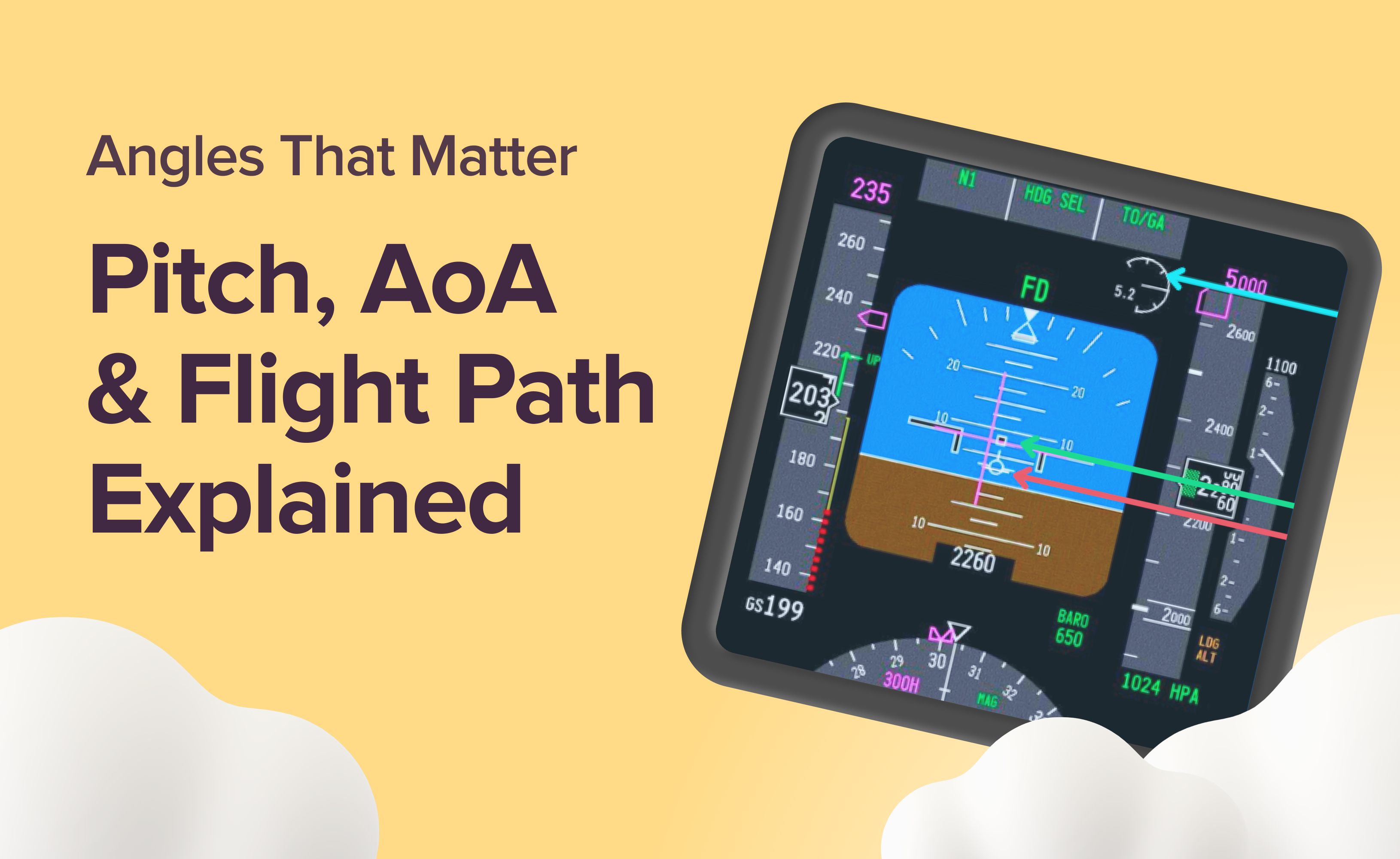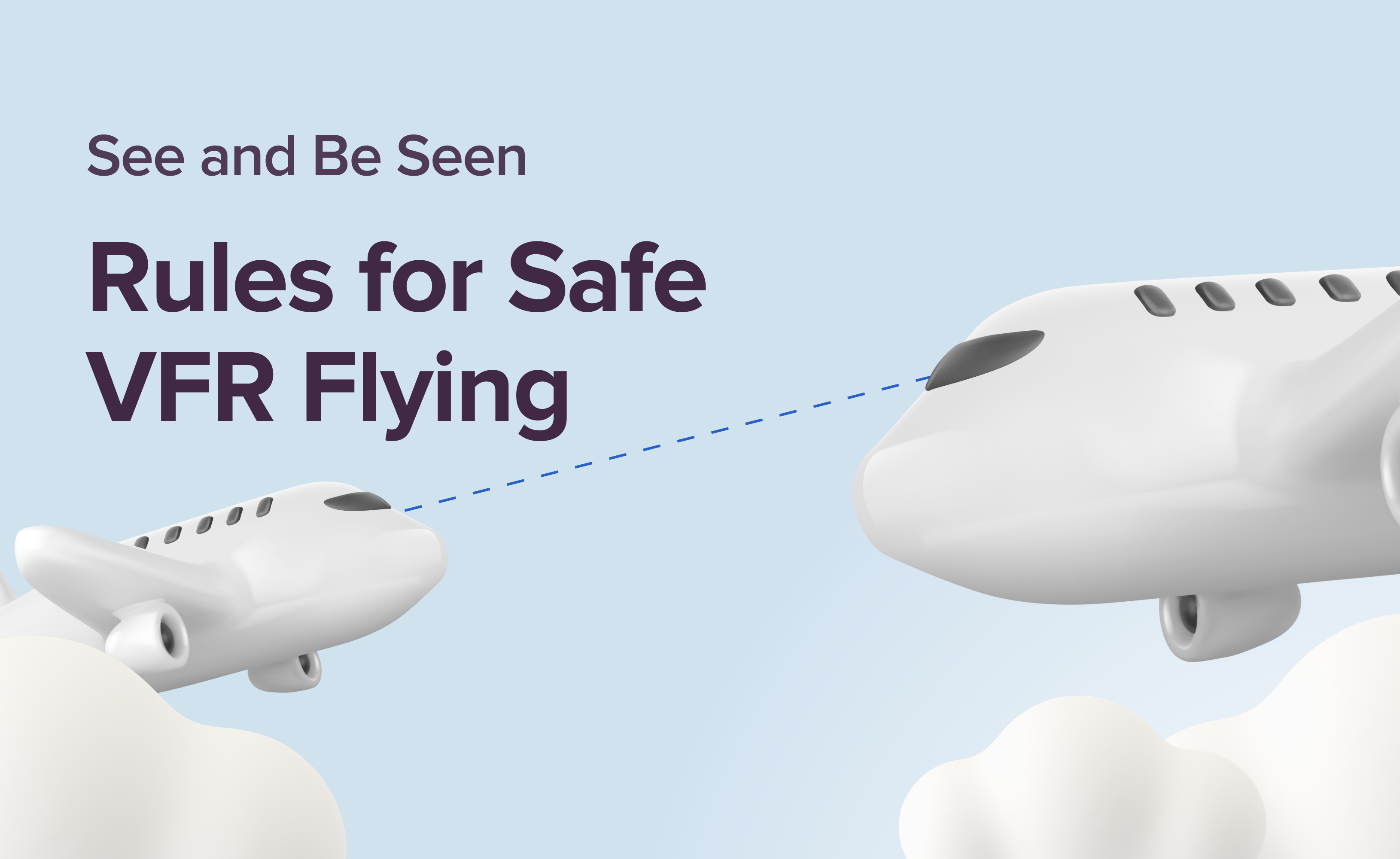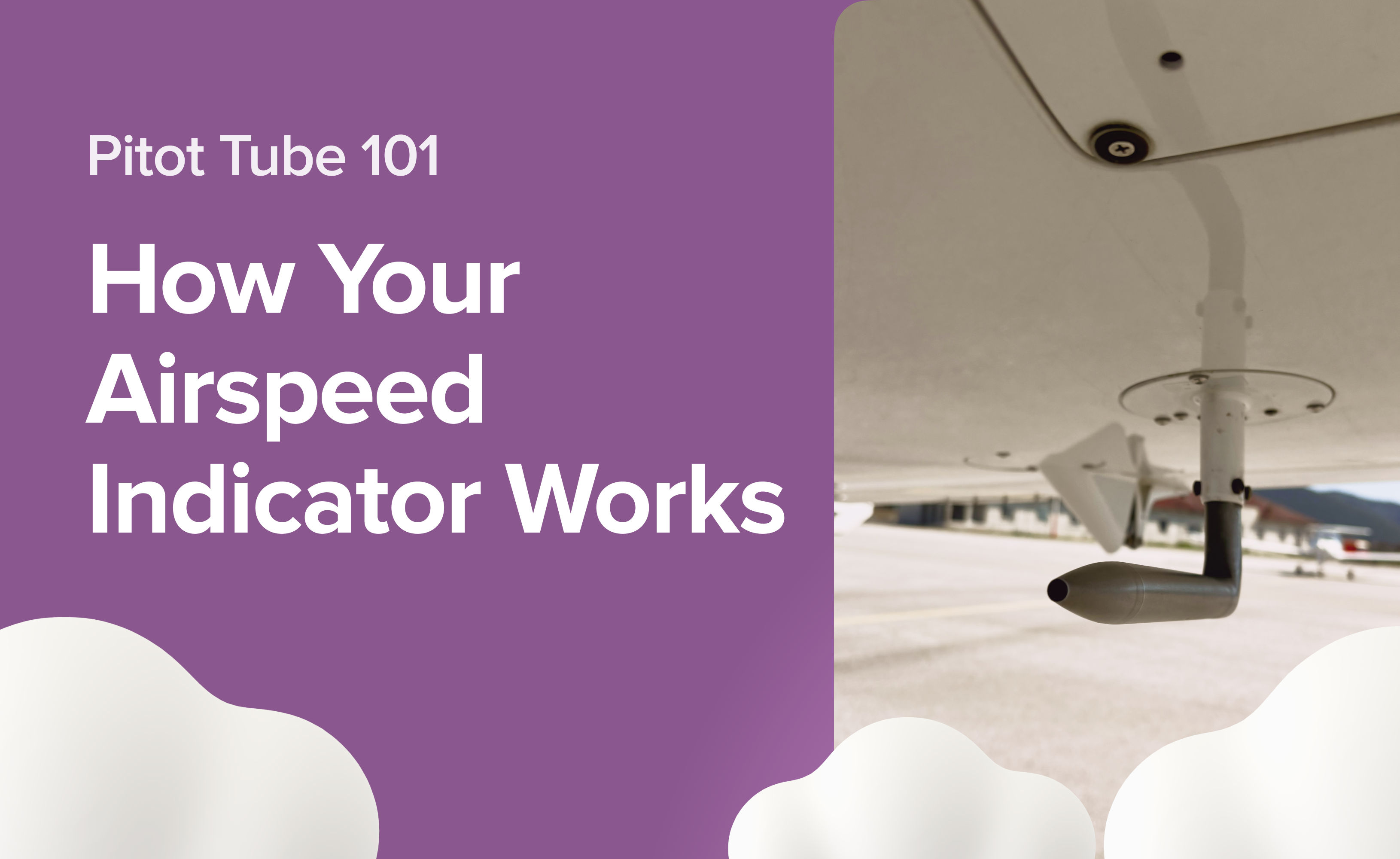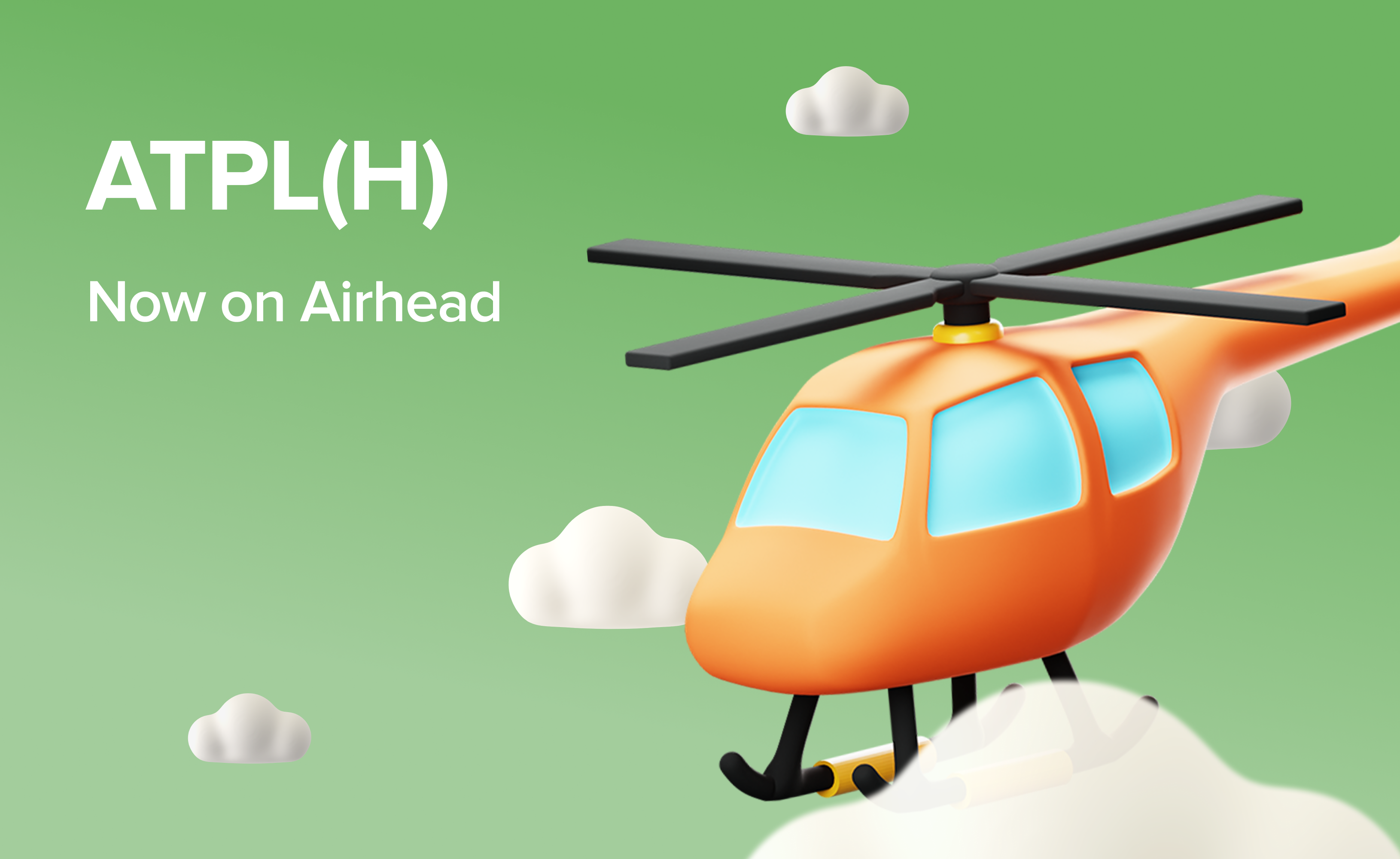From V1 to VREF: Mastering the Maze of V-Speeds

When you're learning to fly, it’s easy to get buried in acronyms. V-speeds are some of the most important ones. These are your aircraft’s performance markers — crucial for take-off, landing, and everything in between. Get them wrong, and things can go sideways — literally. But don’t worry. In this guide, we’ll break down the most common V-speeds you’ll encounter in training, explain what they mean, and show you why they're more than just numbers on a checklist. Continue reading to become a more confident, safer, and smarter pilot.
Keep the ATPL exams from becoming your aviation Everest. Unlock the secrets to success with these proven student strategies and question bank tips.
What Are V-Speeds?
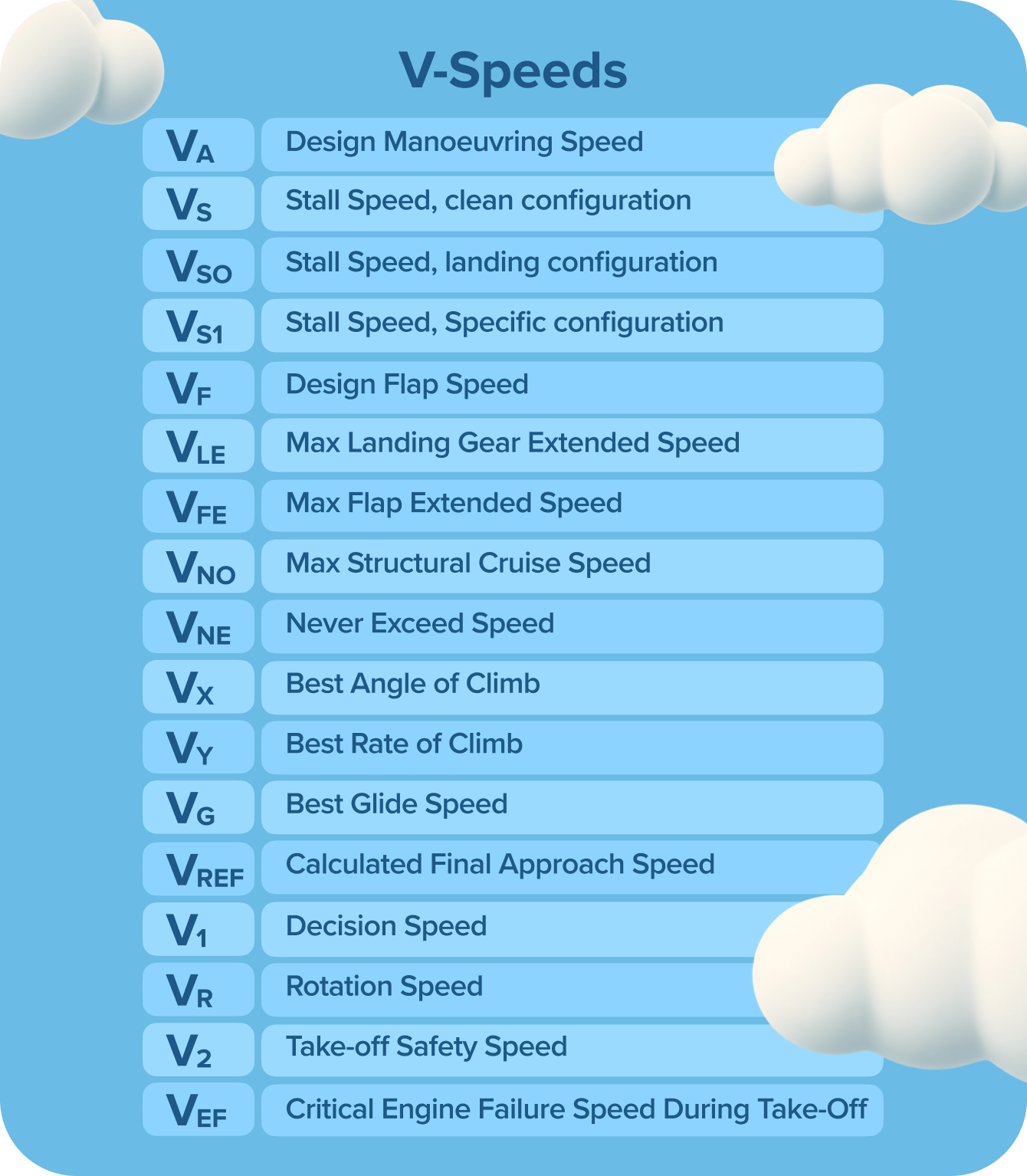
Most people think “V” stands for velocity, and technically that’s not wrong. But the real origin is French — “vitesse”, which simply means speed or rate. Like many aviation terms, it’s a nod to early French contributions to flight.
So, V-speeds are standardised terms for key airspeeds used in specific phases of flight, especially during critical stages like take-off and landing. Each “V” is followed by a letter that tells you what that speed relates to — like V1 for decision speed, or Vso for stall speed in landing configuration.
V-speeds are your aircraft’s “comfort zones.” Use them right, and your aircraft behaves beautifully. Use them wrong, and you're risking performance loss, stalls, or even structural damage.
How do V-speeds get calculated? Aircraft manufacturers gauge them through test flights, then regulators verify them during certification. These speeds tell you how the aircraft performs — and where its limits are.
V-Speeds Are IAS, Not TAS
Here’s a common trap: V-speeds are true airspeeds (TAS) derived from flight testing, but you use them as indicated airspeeds (IAS). That’s because IAS is what your airspeed indicator shows in real time — and that’s what you’re actually flying by.
See the image below for a quick reminder of the 5 crucial airspeeds: IAS, CAS, EAS, GS, TAS. To truly refresh your knowledge, read our full guide: Know Your Airspeed: From Indicated to True.
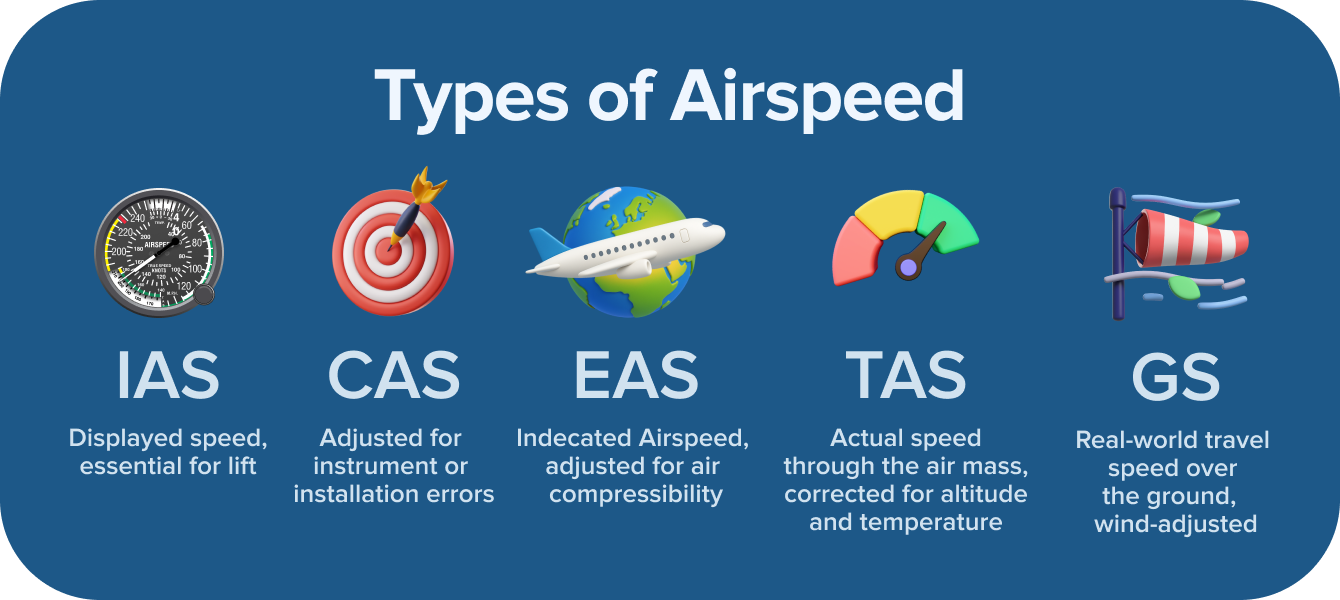
You won’t need to guess your V-speeds. Here’s where to look:
POH / AFM – Your aircraft’s Pilot Operating Handbook or Aircraft Flight Manual lists every V-speed for normal, abnormal, and emergency operations.
Airspeed Indicator – Colour-coded arcs show key speeds like stall speeds, flap limits, and more.
Placards – You’ll often see speeds listed on the cockpit panel — a quick visual reminder.
Enhance your flight training experience with these 14 essential apps. From flight simulators to real-world weather data, these tools will elevate your learning.
Reading the Airspeed Indicator
Let’s talk about the airspeed indicator. It’s packed with visual cues that help you fly within the safe limits of your aircraft. Those coloured arcs provide a direct line to your aircraft’s performance and limitations.
When you're under pressure — short final, rough turbulence, engine failure — you won’t always have time to quote speeds from memory. That’s where these arcs shine.
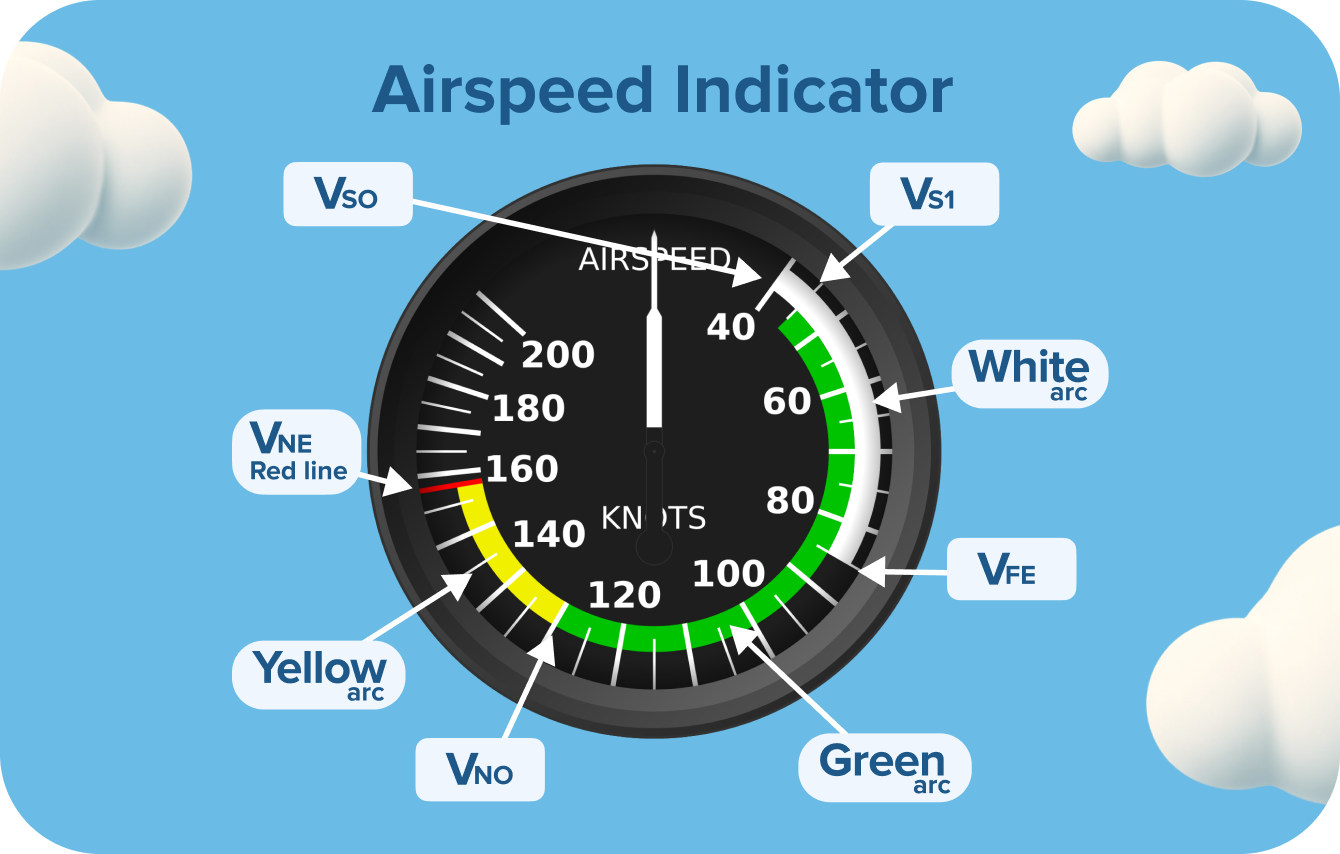
White Arc – Flap Operating Range This is your safe zone for flap use. Starts at Vso (stall speed in landing config) and ends at Vfe (maximum flap extension speed). Use flaps outside this arc, and you're asking for trouble.
Green Arc – Normal Operating Range This is your comfort zone for most phases of flight. Starts at Vs1 (stall speed clean) and goes up to Vno (maximum structural cruising speed). You’ll spend most of your flying time here.
Yellow Arc – Caution Range Between Vno and Vne. Only fly here in smooth air, and avoid abrupt control inputs. This zone means: Proceed with care!
Red Line – Never Exceed Speed (Vne) Hard limit. Cross this, and you risk structural failure. Think of this as the “no-go red zone.”
Tip for Students. Draw the airspeed indicator by hand and label the arcs and speeds for your aircraft. Sounds old-school, but it’s a great way to make those speeds stick.
To fully comprehend your airspeed readings, an understanding of the underlying principles is essential. Our latest blog, Pitot Tube 101: How Your Airspeed Indicator Works, gives a foundational insight into this critical system.
The 8 Core V-Speeds
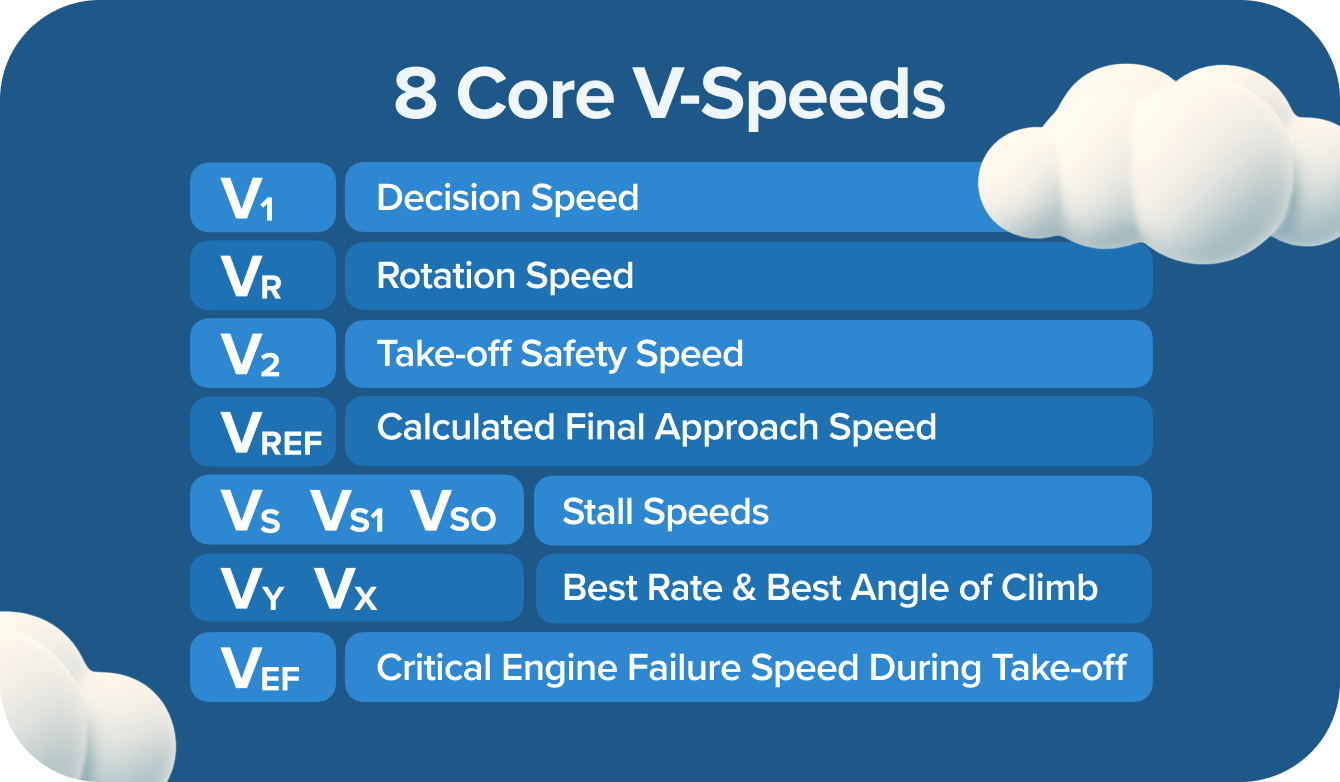
As pilots, we’re required to be familiar with all available information concerning a flight. That includes knowing every V-speed by definition and value for your aircraft. While the full list of V-speeds can stretch longer than a pre-flight briefing on a rainy day — there’s a core group that matters most in flight training. Master these, and you’re already ahead of the game.
Let's start with the take-off trifecta – V1, Vr, V2. When you’re flying a multi-engine aircraft, the take-off roll becomes a game of precision timing. At certain key speeds, you have to make specific decisions.
V1 – Decision Speed
V1 is the speed by which the pilot must decide to either abort or continue the take-off. It marks the point of no return.
If an engine fails before V1, the take-off should be safely aborted using the remaining runway.
If the engine fails after V1, the pilot is committed to take off, even with one engine inoperative — there simply isn’t enough runway left to stop safely.
Vef – Critical Engine Failure Speed
This is where VEF (Critical Engine Failure Speed) comes into play. VEF is defined as the speed at which the critical engine is assumed to fail for performance calculations. It occurs just before V1 — close enough that the pilot doesn’t have sufficient time to recognise the failure and stop before V1. In that case, the plane must still be able to continue taking off and safely reach the required height and distance on one engine.
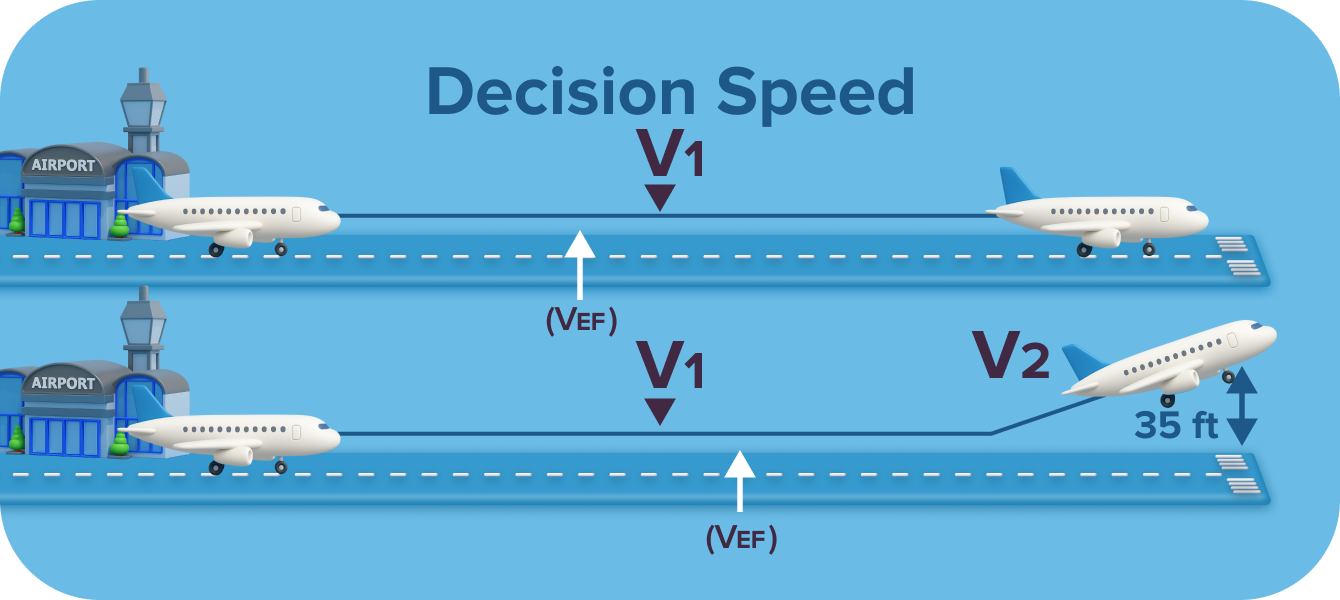
Vr – Rotation Speed
This is the speed at which you begin to gently pull back on the yoke and let the nose rise. Not before. Not after. Too early? Risk a stall. Too late? You’ll eat up more runway than you need. Think of Vr as your cue to start flying, not forcing. Vr is determined based on weight, flap setting, and runway length. It must always be greater than or equal to V1.
V2 – Take-Off Safety Speed. Another one mainly for twins and jets, V2 is the minimum speed you need to maintain a safe climb if one engine fails just after take-off. Once airborne, V2 is the minimum speed you must reach to ensure a safe climb — even with one engine out. It must be achieved by 35 feet AGL (Above Ground Level), as shown in the diagram. This speed gives you the required margin over stall and ensures controllability on one engine.
Stall Speeds
VS – stall speeds are one of the most critical V-speeds in your training. Stalls are sneaky, and these speeds help you stay above the danger zone.
Vs = The basic stall speed in a clean configuration.
Vs1 = Stall speed in a specified configuration (often clean, sometimes with flaps/gear — check your POH).
Vso = Stall speed in landing config, gear and flaps down.
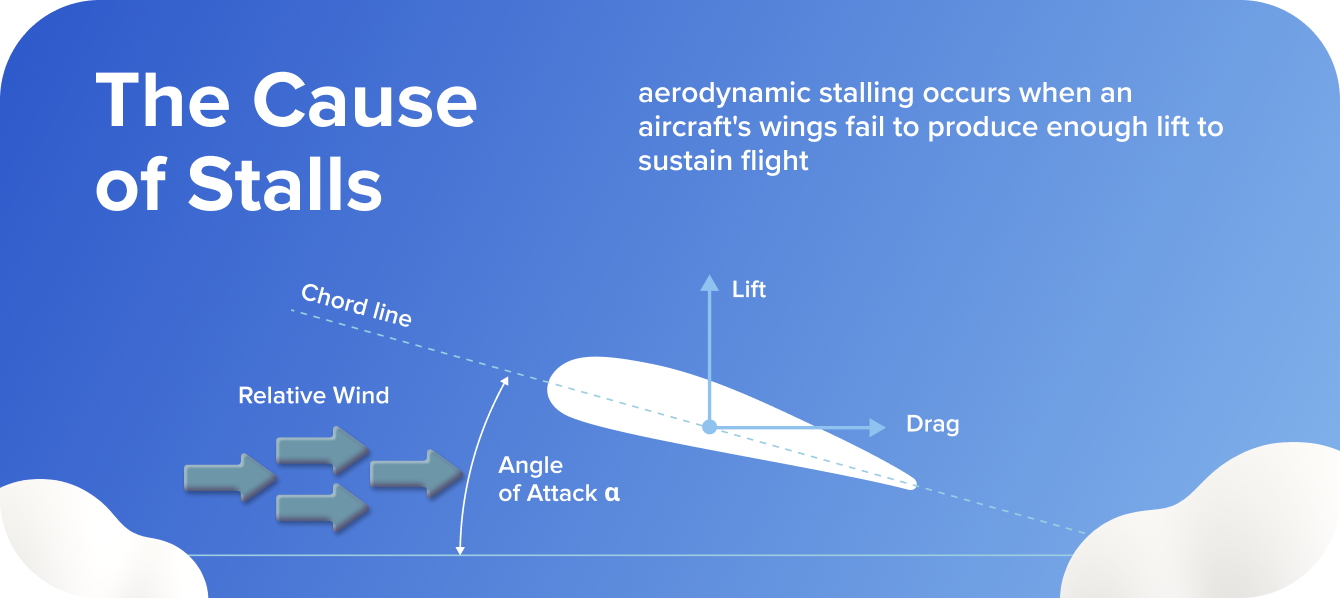
At its core, VS is the lowest speed at which your aircraft can maintain steady, level flight — without stalling. But here’s the twist: an aircraft can stall at any airspeed.
A stall has nothing to do with speed directly — it happens when your aircraft exceeds the critical angle of attack (AOA). That’s the point where smooth airflow over the wings breaks down, and lift disappears faster than a coffee in the crew room.
So, VS gives us a reference point — the speed below which, in normal flight attitude, you are most likely to stall. Think of it as the danger zone in straight-and-level flight when the airspeed gets too low.
Our “Stalls Explained” blog explores lift loss in flight. Learn precisely why it happens and how to execute a smooth, confident recovery – turning fear into mastery
Keep in mind: Manufacturers determine stall speeds through flight testing. These tests are typically performed at maximum take-off weight and throttle closed. That means the published stall speeds in your POH are the worst-case scenario. Your stall speed in real life may be lower than published. But don’t rely on that margin.
Vref – Reference Landing Speed
This is your approach target — usually 1.3 times the stall speed in landing configuration (Vso). It gives you enough margin over the stall while still landing safely. Too fast and you float. Too slow and… well, don’t.
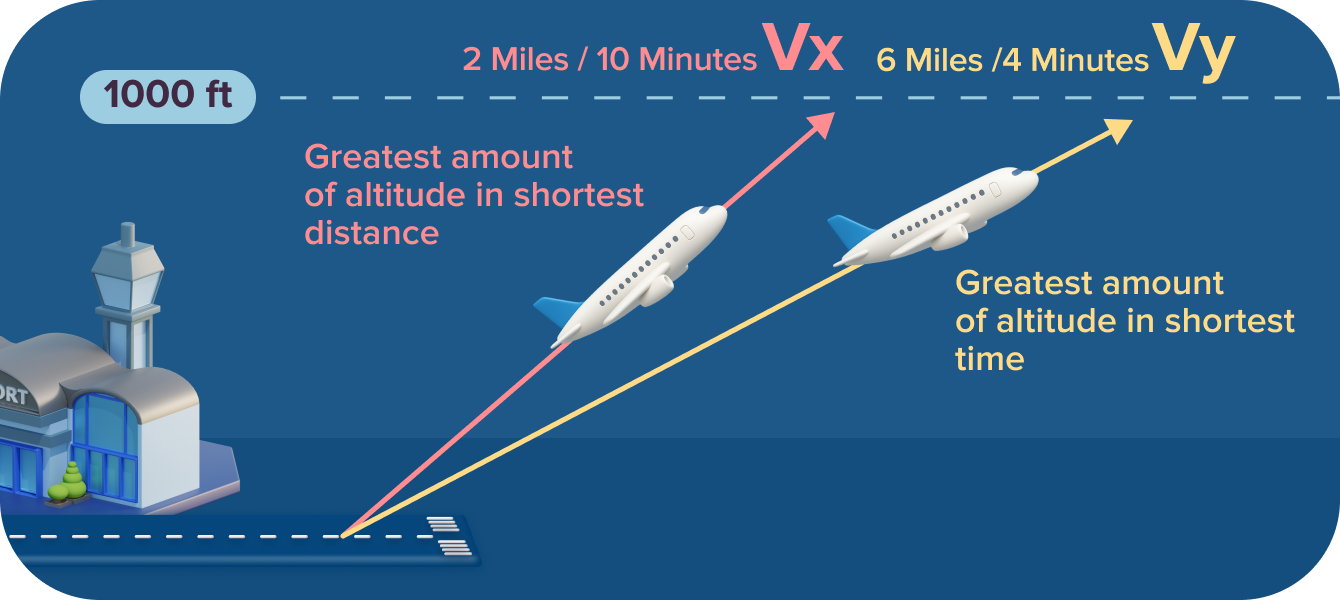
Vy – Best Rate of Climb
Vy gives you the most altitude gain in the least amount of time. It's ideal when your goal is efficient climb performance — for example, when departing a long runway and you’re not immediately concerned about obstacles. Vy is the speed you’d use to reach cruise altitude as quickly as possible, which can enhance fuel efficiency, cooling, and visibility (by getting above weather or turbulence).
Vx – Best Angle of Climb
Vx gives you the most altitude gain over the shortest horizontal distance. It’s your go-to climb speed when you need to clear an obstacle — like trees, terrain, or power lines — at the end of the runway. This is a lower airspeed than Vy, so it results in a steeper climb, but a slower forward speed.
Vx is for trees, Vy is for knees.
Use Vy for efficiency, Vx for obstacle clearance.
Understand the Best Rate of Climb speed. Read our blog post: It's All Connected: TWR, Drag, and the Climb Rates.
Other Critical V-Speeds to Know
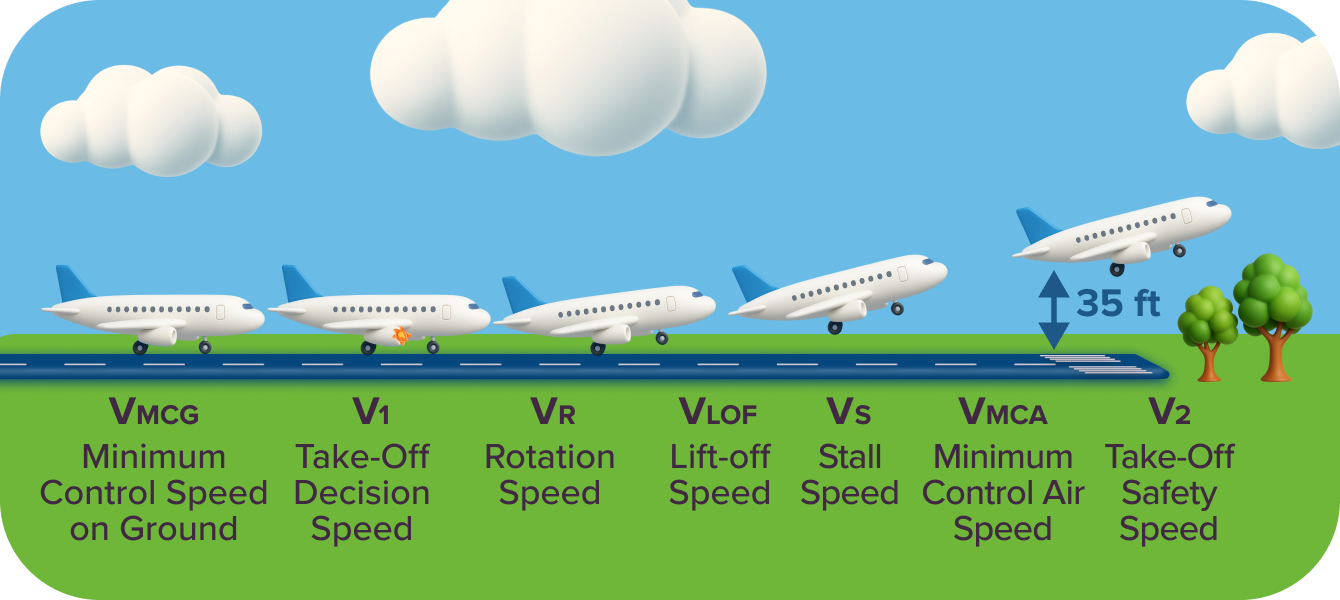
These speeds are not just about performance; they’re also about control.
Vmc – Minimum Control Speed (Airborne)
This is the lowest speed at which the aircraft is controllable with one engine inoperative (typically the critical engine) and full rudder applied. Drop below Vmc, and you risk losing directional control — especially during take-off and initial climb.
Vmcg – Minimum Control Speed on the Ground
Similar idea, but on the runway. This is the speed at which, if one engine suddenly fails, you can still maintain directional control without lifting off.
Vmca – Minimum Control Speed in the Air
Vmca refers to minimum control speed in the air. Slightly different from Vmc, but many treat them interchangeably in basic training. Always check the aircraft manual — values can vary depending on configuration.
Vlof – Lift-Off Speed
This is the speed at which the aircraft actually leaves the ground during take-off. It’s often close to Vr but not always identical. In jets, this speed is more carefully defined due to longer acceleration distances. Think of Vlof as the moment wheels lose contact. Vr is when you start rotation.
Vfe – Maximum Flap Extended Speed
Fly faster than Vfe with flaps out, and you're risking flap damage — or worse. As aircraft get faster, flap extension speeds become more restrictive, so always double-check before deploying.
Vmo / Mmo – Maximum Operating Speed
Vmo = Maximum Operating Speed (in knots)
Mmo = Maximum Operating Mach (as a decimal)
Exceeding these can cause buffet, structural stress, or even loss of control. Modern aircraft will give you warnings — but in older jets, you’ve got to stay alert.
Consistently achieve smooth landings and master flap adjustments with our in-depth guide, Flaps, Lift & Drag: The Secret to Smooth Landings.
Do V-Speeds Change?
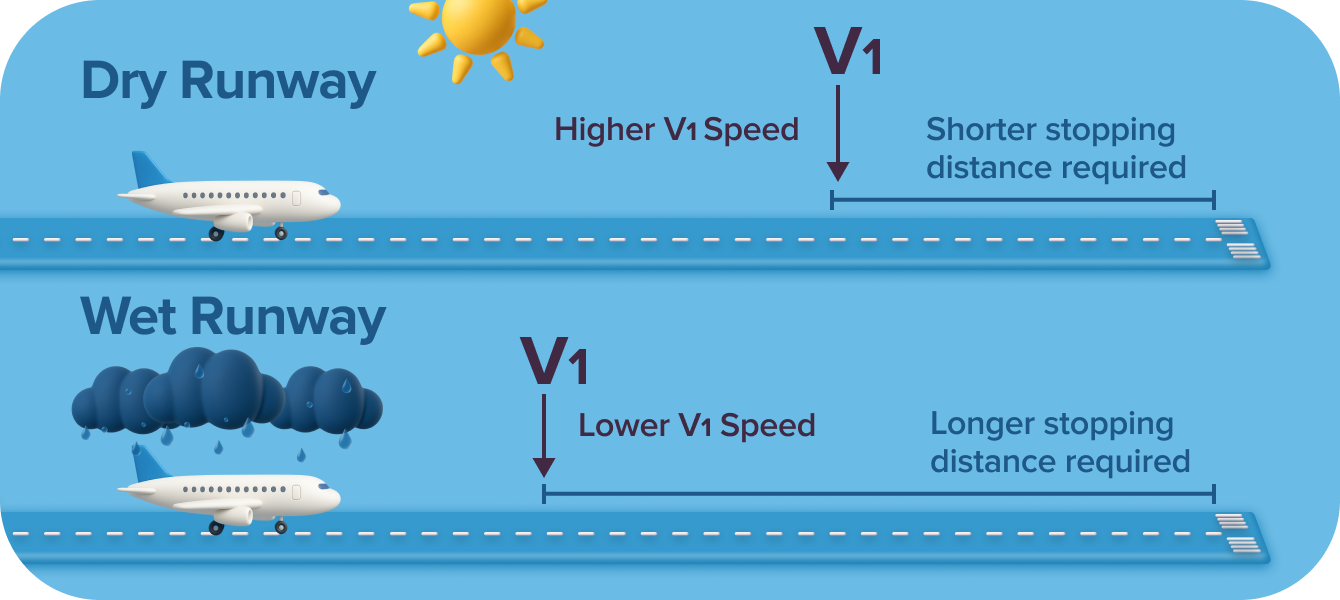
Short answer? Yes, they do — and sometimes quite a bit.
While many student pilots are taught fixed numbers for V-speeds during early training, the truth is: most V-speeds aren’t fixed at all. They depend on a number of factors that change your aircraft’s performance on the day. These include:
Aircraft weight: Heavier aircraft = higher speeds needed to rotate, climb, or avoid a stall.
Configuration: Flaps, gear, and even CG location can change stall speeds and control effectiveness.
Altitude: Higher altitude = thinner air. That affects engine performance, lift, and climb capability. Temperature: High temps reduce air density, which in turn affects pressure altitude and aircraft performance. This is crucial for Vx and Vy.
Runway conditions: Contaminated or wet runways don’t directly affect your V-speeds — but they absolutely affect your take-off and landing performance, which can influence how and when you apply those speeds.
This is why aircraft performance charts exist — to help you adjust your speeds to the conditions.
Tips to Remember V-Speeds
Let’s be honest — trying to memorise every V-speed can feel like cramming for a pub quiz you didn’t sign up for. But don’t worry. You don’t need to know every number by heart. What you need is to understand what they mean, when they matter, and how to use them in real flying.
Focus on Purpose, Not Just Numbers. Instead of locking in a value like Vr = 65 knots, understand why you rotate at that speed. It’s the point where your aircraft has enough lift to safely leave the ground. The actual number will change with weight, wind, and aircraft type.
Make a Personal Speed Card. Take a blank index card and write down your aircraft’s important V-speeds. Keep it in your headset case or flight bag. This way, you’re reviewing them every time you fly — no cramming needed.
Don’t Rely on Memory Alone. Aircraft have placards, checklists, and AFM/POH for a reason. Always cross-check speeds based on current conditions — especially weight and density altitude.
Make it a habit to review your V-speeds before every flight. Just like weather or NOTAMs, they’re part of your pre-flight prep. The more familiar you are with your aircraft’s numbers, the smoother — and safer — your flying will be.

Airhead's Takeaway
As you approach flight tests, check rides, or ATPL training, remember: examiners are watching for smart, confident flying. They want to see that you understand what each V-speed means, that you can apply them accurately across all phases of flight, and that you’re capable of adjusting speeds based on aircraft weight, configuration, or runway conditions. Most importantly, they want to see that your decisions are based on the Pilot’s Operating Handbook (POH) — not guesswork.
Master V-speeds as your tools. Use them wisely. And fly like you mean it.






